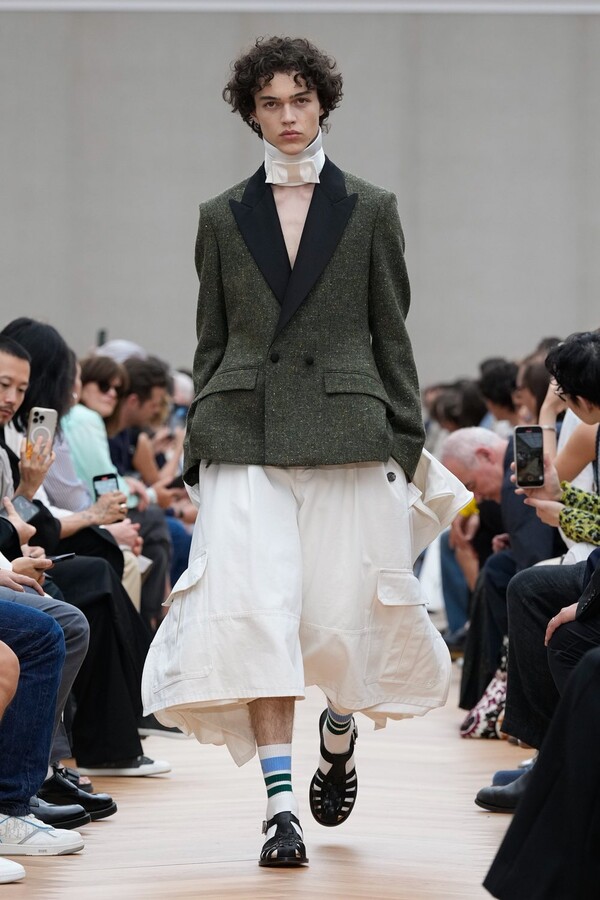Jonathan Anderson is one of the most respected designers in contemporary fashion, known for his sophisticated sense of humor, deconstructive approach and ability to balance between the avant-garde and the classic. He has been creating his own brand JW Anderson for years. Meanwhile, since 2013, he also ran Loewe, for which he created a completely new identity. Naturally, he combined Spanish craftsmanship with conceptual design. How did Jonathan Anderson’s debut for Dior turn out? At Dior, Anderson replaced Kim Jones, who, after several seasons in which he successfully combined streetwear with the haute couture tradition, gave way to a designer with a completely different, more intellectual outlook on men’s fashion.
Jonathan Anderson for Dior. First collection shown in ParisJonathan Anderson for Dior.
Anderson’s debut for Dior Menswear for the Spring/Summer 2026 season took place in the monumental, yet surprisingly intimate anthura of Paris’ Invalides. The interior was lined with a large-format photograph of Christian Dior’s historic 1950s showroom, while the walls were decorated with intimate still lifes by Chardin. This immediately introduced a narrative of the craftsmanship of detail and history.
Instead of a spectacular show, the designer opted for close contact with the viewer. Therefore, the models walked among the audience. This made it possible to see fabric textures, embroidery and construction in detail. This form of presentation corresponded perfectly with Anderson’s philosophy, who wanted viewers to gain a physical, almost tactile understanding of the designs.
Silhouettes and motifs – a new dialogue with history
Jonathan Anderson for Dior is all about playing with contrasts and deconstructing the classics. Designer juxtaposed historical elements with modern, often casual pieces of clothing
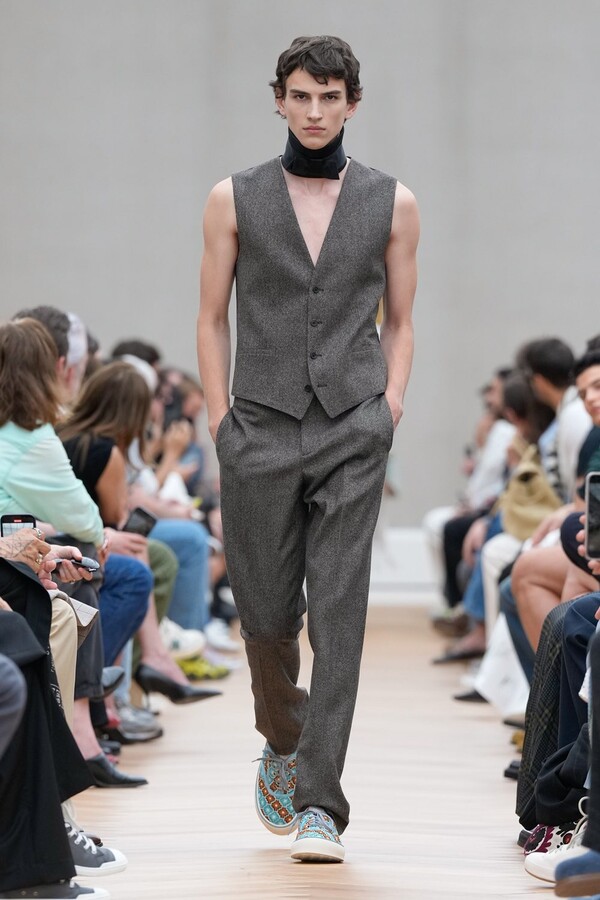
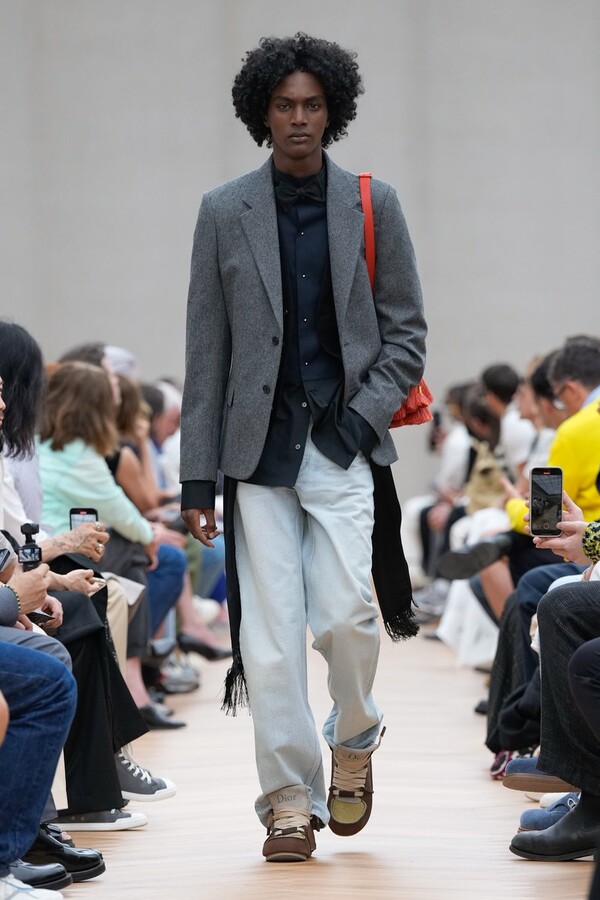
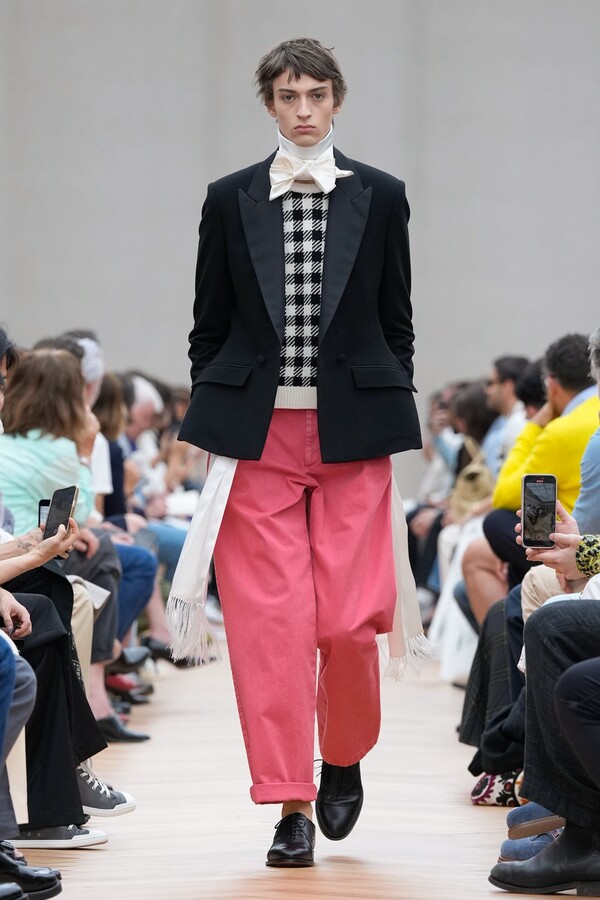
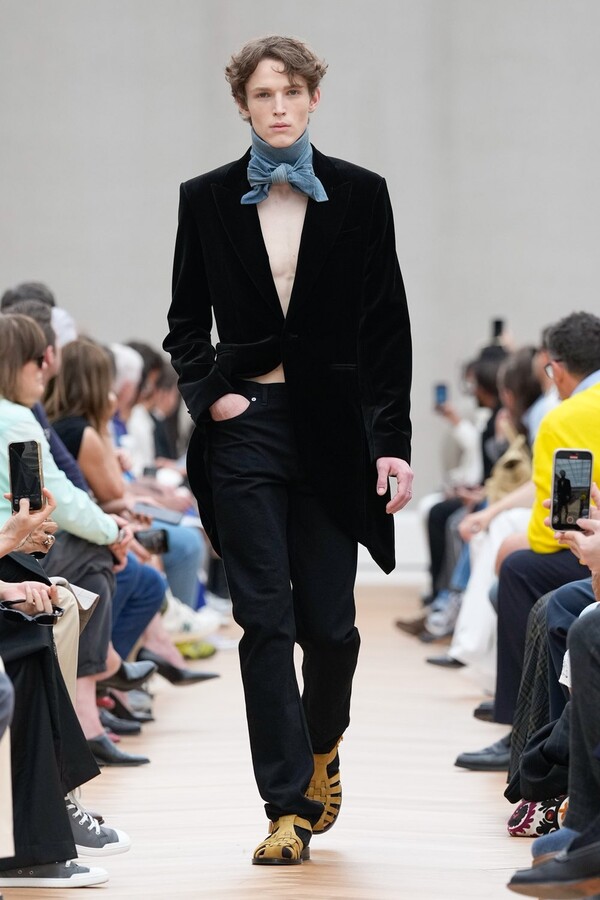
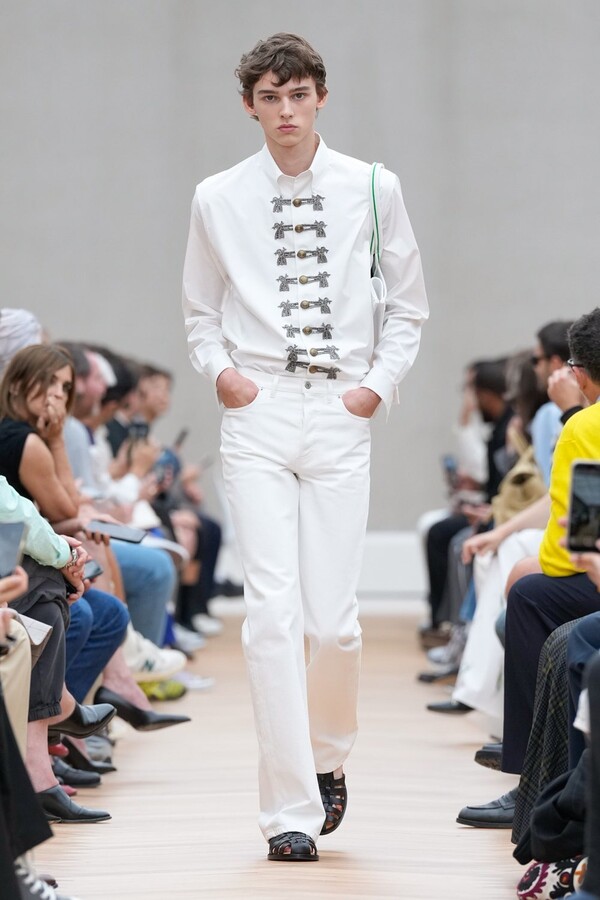
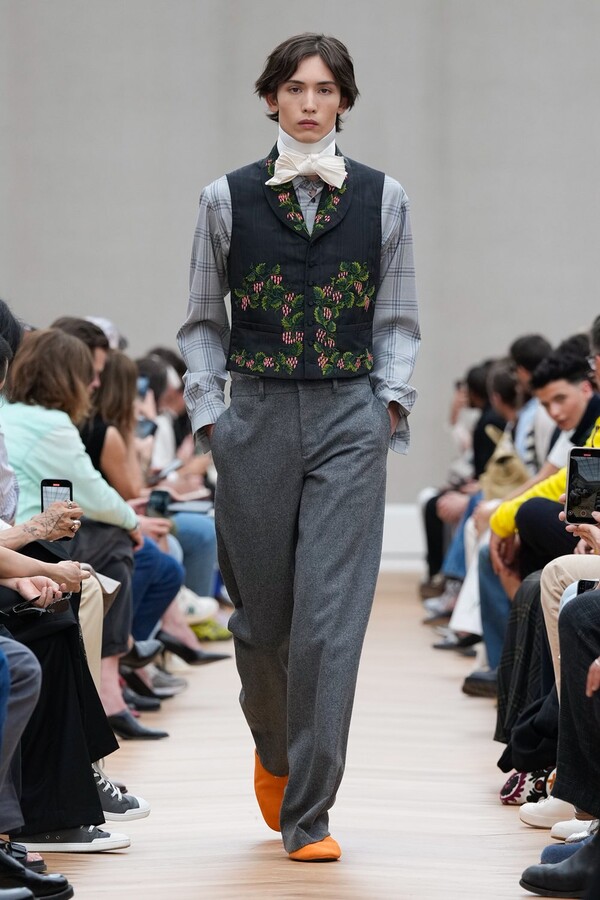
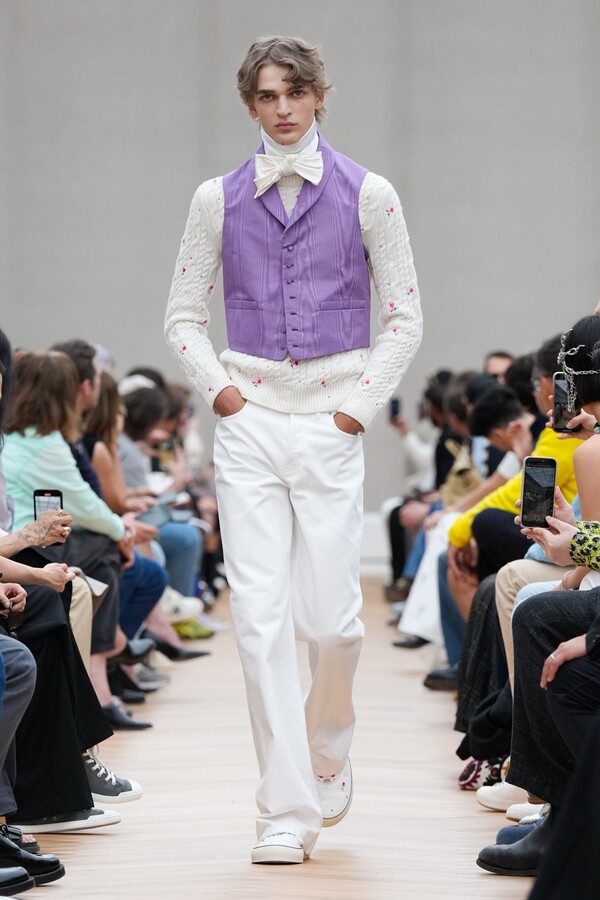
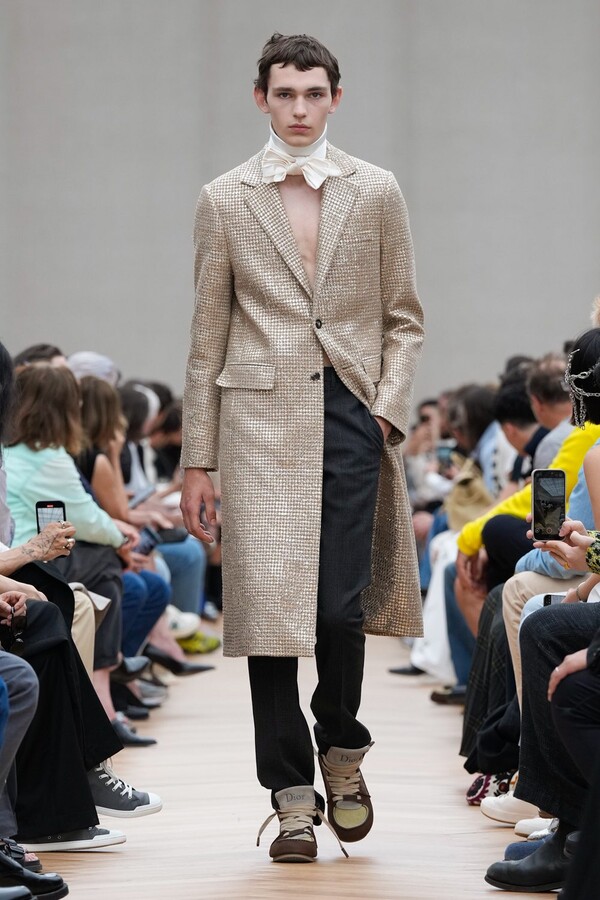
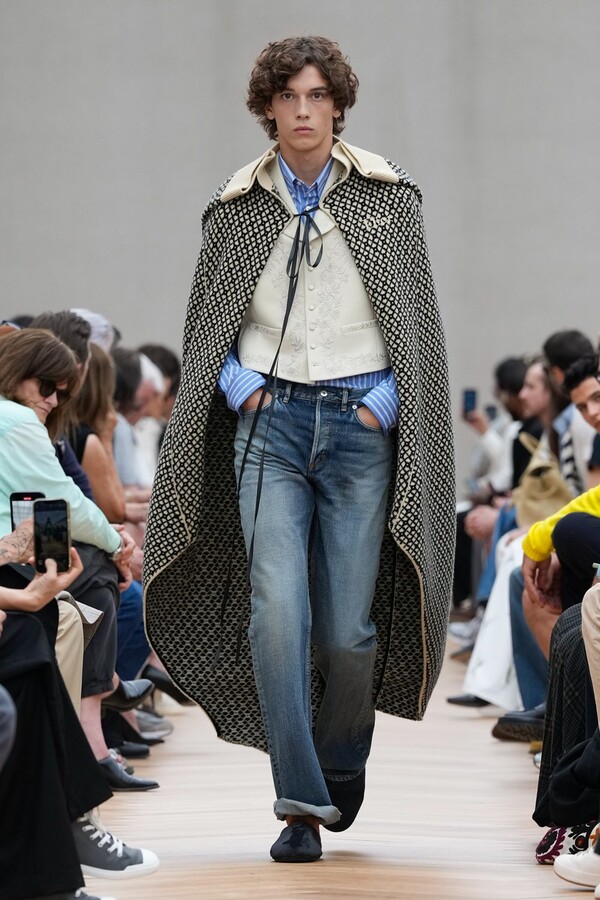
- The iconic Bar jacket was paired with conceptual short chinos and sandals reminiscent of school summer shoes
- A gray velvet morning jacket in a washed shade was paired with faded jeans
- The most spectacular, however, were the pre-revolutionary jackets and frock coats in the style of Louis XVI. These the designer decorated with embroidery and gold buttons. He composed them with simple black cotton pants and brown suede trekking shoes.
A distinctive touch was the high collars. The detail was inspired by drawings by painter Romaine Brooks from the 1920s. Many of the silhouettes also showed the influence of French preppy style: colorful chunky plaid sweaters, light-colored jeans and loose summer jackets.
Brand spirit vs. new vision
Although the collection draws heavily from aristocratic 18th- and 19th-century French men’s fashion patterns, Anderson sought to give them a modern context. Masterful workmanship was evident in the designs. The intricacy is highlighted by close presentation: embroidered silk vests, floral appliqués, gold openwork buttons, the subtle sheen of faille and moire in pastel colors.
Importantly, the designer wanted these sophisticated pieces to look as if they were found by chance and worn nonchalantly. Therefore, without being overblown, with a natural looseness.
Inspiration and cultural context
Iconography was also an important theme of the collection: photographs by Andy Warhol depicting Jean-Michel Basquiat and Lee Radziwill, two iconic Americans from different worlds. This contrast emphasized the versatility and timelessness of Dior’s style.
How is it rated: Jonathan Anderson for Dior?
Reviews from critics and the industry have been largely enthusiastic. They appreciate not only the formal artistry and historical erudition, but also the subtle new energy Anderson has brought to the male Dior. Instead of spectacular deconstruction or fashion manifesto, the designer showed a thoughtful, coherent vision. With a clear respect for the brand’s heritage, but also with an authorial, contemporary twist.
It’s a debut that doesn’t so much shock as draw you into the story. About the history of French men’s fashion, about details, about casual elegance and about the fact that haute couture doesn’t have to be a museum exhibit, but can live in the here and now.




